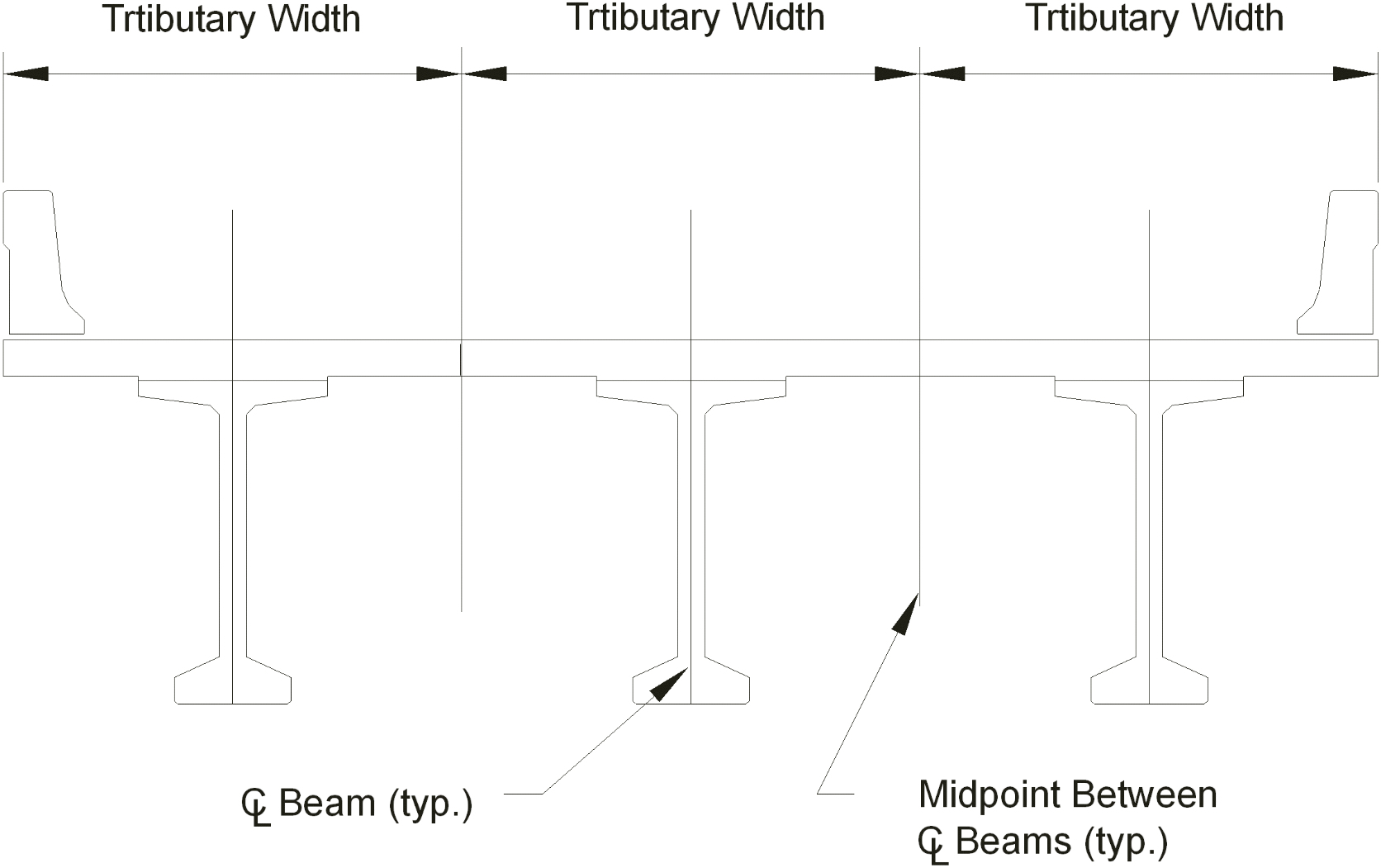Dead Loads
The permanent or dead loads acting on the bridge are modeled either as dead load of cast-in-place and all non-structural elements, D_CIP, or dead load of wearing surface, D_WS, or dead load of factory produced components, D_FPC. Dead loads on precast can be modeled only as Line or Point Loads; however, dead loads on composite can be modeled as Line, Point, and Area loads. In the case where you specify an area load and a width over which this load applies, Precast/Prestressed Girder multiplies the two together and analyzes it as a line load acting on the continuous beam model, as discussed in the previous section. The resulting moments and shears are then distributed to each beam using the dead load distribution/tributary fraction factors.
| Load Type | CHBDC Class | Distribution to Girder | |
|---|---|---|---|
| Non-Composite Loads | Self weight of girder | D_FPC | Computed by program. |
| Non-Composite Loads | Self weight of Haunch+Slab | D_CIP | Calculated by program based on tributary width of slab. |
| Non-Composite Loads | Dead load on Precast | D_CIP, D_FPC, D_WS | User input per girder. |
| Non-Composite Loads | Diaphragm loads |
D_FPC |
User input per girder. |
| Composite Loads | Dead load on composite | D_CIP, D_FPC, D_WS | User input for bridge, auto-distributed to girder based on tributary width fraction. |

